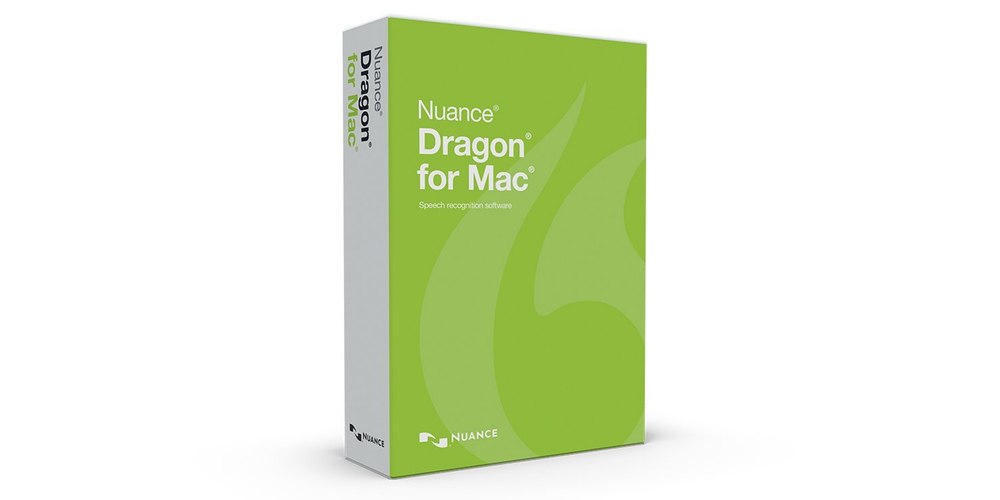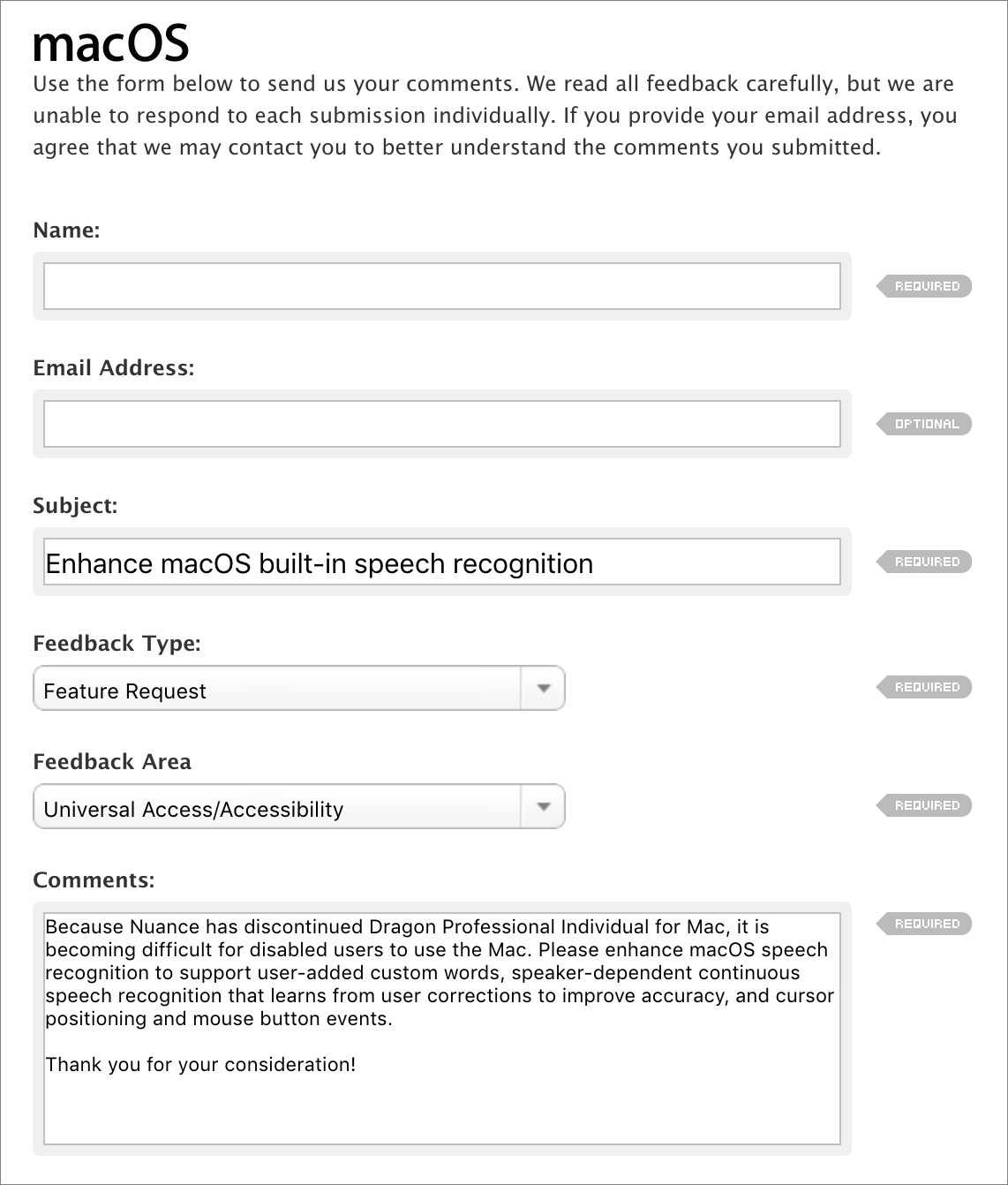Nuance Dragon For Mac
Nuance Dragon Professional Individual for Mac, v6 For v6 of: Contents Dragon Professional for Mac User Guide 1 Get started 25 Using the Dragon menu 25 Related topics: 26. Dragon for MAC 5.0, US ENGLISH (Discontinued) by Nuance Dragon. Nuance Dragon NaturallySpeaking Premium 13.0 with Dragon Bluetooth Wireless Headset (Discontinued). Nuance® Dragon® Medical Practice Edition 4 Speech Recognition Software for Windows Cutting-edge technology brings efficiency to the clinic environment with superior speech recognition, amplified for medical use. Simple setup, easy-to-use functions, dependable performance.
Nuance Dragon is not available for Mac but there are plenty of alternatives that runs on macOS with similar functionality. The most popular Mac alternative is Dictanote, which is free. If that doesn't suit you, our users have ranked 36 alternatives to Nuance Dragon and 12 are available for Mac so hopefully you can find a suitable replacement. Find the Top Nuance Communications Mac Productivity Softwares with the MSN Buying Guides Compare Products and Brands by Quality, Popularity and Pricing Updated 2020.
Installing Dragon Naturally Speaking on an Intel based Macintosh

Dragon NaturallySpeaking is the recognized leader in continuous speech recognition technology. Until recently, owners of Apple computers have been unable to use this software and have been limited to the use of iListen and IBM ViaVoice. Now, with Intel based Apple Macintosh computers and the presense of Parallels, Apple users have the option of installing and using Dragon on a 'virtual operating system' on their systems. The process is described here.
Prerequisites for this include the following:
- An intel based Macintosh
- Parallels Software
- Windows XP or Vista installation Disk
- Dragon NaturallySpeaking
- All necessary microphone hardware (we recommend using a good quality microphone and a USB adapter
We have found the following method, adapted from the method presented by 'Webair' on the Parallels Forum, to be an effective method of running Dragon NaturallySpeaking on an Intel based Macintosh.
Preliminaries:Before using this method it is important that you accomplish the following:
- Install Parallels Desktop on your Intel Mac
- Set up a virtual operating system using Windows XP using Parallels
- Install Dragon NaturallySpeaking on the Windows XP virtual machine using the standard methods of Dragon installation
- Before actually setting up a microphone and configuring a new user in Dragon, follow the steps listed below.
Configuration: With the preliminaries accomplished, your system should be configured as follows:


- In the Mac OS please go to the 'System Preferences' - 'Sound' - 'Input' - highlight your device in the list (this will make it the default audio input device for Mac).
- Set the input volume in the Preference pane so that the microphone input level peaks near the middle of the bar range (editors note: alternatively set the level in the mid to upper range)
- With your virtual machine stopped, Start Parallels Desktop, choose your virtual machine (VM). In Configuration Editor in the USB Controller section turn'Autoconnect USB devices' to OFF (or un-check the 'Enabled' button).
- In Configuration Editor, in the Audio tab, choose the Default Audio as the input device.
- Run the virtual machine.
- Voice settings for Playback and Recording in the Windows XP Control Panel should be left at “Intel[r] Integrated Audio”.
- Start and run NaturallySpeaking in the normal fashion. With no other audio input available, it will default to the 'intel integrated audio' during audio set-up.
Notes:
In our experience, the above method allows use of NaturallySpeaking on the Windows 'Virtual Machine' and dictation into all text input windows on the Windows side, but will not provide input into documents on the Mac side, even in the 'coherence' mode.
Another peculiarity of this method is that with when a USB microphone is disconnected, the link between the Macintosh and Windows side is lost and does reconnect unless the virtual machine is closed and re-opened (a 5 second process). It is not, however, necessary to actually restart the Windows operating system to reconnect - you need only open and close the virtual machine. For some 'road warriors' this may have implications. Likewise for the user that has the need to connect and reconnect the USB microphone or device throughout the day, this poses a minor annoyance.
Comments on these recommendations? Have you discovered a better method of setting up Dragon NaturallySpeaking on an Intel-based Mac? Please share your findings with us and we'd be delighted to post them. Contact: jon@speechrecsolutions.com
In October 2018, Nuance announced that it has discontinued Dragon Professional Individual for Mac and will support it for only 90 days from activation in the US or 180 days in the rest of the world. The continuous speech-to-text software was widely considered to be the gold standard for speech recognition, and Nuance continues to develop and sell the Windows versions of Dragon Home, Dragon Professional Individual, and various profession-specific solutions.
This move is a blow to professional users—such as doctors, lawyers, and law enforcement—who depended on Dragon for dictating to their Macs, but the community most significantly affected are those who can control their Macs only with their voices.
What about Apple’s built-in accessibility solutions? macOS does support voice dictation, although my experience is that it’s not even as good as dictation in iOS, much less Dragon Professional Individual. Some level of voice control of the Mac is also available via Dictation Commands, but again, it’s not as powerful as what was available from Dragon Professional Individual.
TidBITS reader Todd Scheresky is a software engineer who relies on Dragon Professional Individual for his work because he’s a quadriplegic and has no use of his arms. He has suggested several ways that Apple needs to improve macOS speech recognition to make it a viable alternative to Dragon Professional Individual:
- Support for user-added custom words: Every profession has its own terminology and jargon, which is part of why there are legal, medical, and law enforcement versions of Dragon for Windows. Scheresky isn’t asking Apple to provide such custom vocabularies, but he needs to be able to add custom words to the vocabulary to carry out his work.
- Support for speaker-dependent continuous speech recognition: Currently, macOS’s speech recognition is speaker-independent, which means that it works pretty well for everyone. But Scheresky believes it needs to become speaker-dependent, so it can learn from your corrections to improve recognition accuracy. Also, Apple’s speech recognition isn’t continuous—it works for only a few minutes before stopping and needing to be reinvoked.
- Support for cursor positioning and mouse button events: Although Scheresky acknowledges that macOS’s Dictation Commands are pretty good and provide decent support for text cursor positioning, macOS has nothing like Nuance’s MouseGrid, which divides the screen into a 3-by-3 grid and enables the user to zoom in to a grid coordinate, then displaying another 3-by-3 grid to continue zooming. Nor does Apple have anything like Nuance’s mouse commands for moving and clicking the mouse pointer.

When Scheresky complained to Apple’s accessibility team about macOS’s limitations, they suggested the Switch Control feature, which enables users to move the pointer (along with other actions) by clicking a switch. He talks about this in a video.
Nuance Dragon For Mac Medical Version 5

Unfortunately, although Switch Control would let Scheresky control a Mac using a sip-and-puff switch or a head switch, such solutions would be both far slower than voice and a literal pain in the neck. There are some better alternatives for mouse pointer positioning:
- Dedicated software, in the form of a $35 app called iTracker.
- An off-the-shelf hack using Keyboard Maestro and Automator.
- An expensive head-mounted pointing device, although the SmartNav is $600 and the HeadMouse Nano and TrackerPro are both about $1000. It’s also not clear how well they interface with current versions of macOS.
Regardless, if Apple enhanced macOS’s voice recognition in the ways Scheresky suggests, it would become significantly more useful and would give users with physical limitations significantly more control over their Macs… and their lives. If you’d like to help, Scheresky suggests submitting feature request feedback to Apple with text along the following lines (feel free to copy and paste it):
Because Nuance has discontinued Dragon Professional Individual for Mac, it is becoming difficult for disabled users to use the Mac. Please enhance macOS speech recognition to support user-added custom words, speaker-dependent continuous speech recognition that learns from user corrections to improve accuracy, and cursor positioning and mouse button events.
Dragon For Mac Os
Thank you for your consideration!
Nuance Dragon For Mac Torrent
Thanks for encouraging Apple to bring macOS’s accessibility features up to the level necessary to provide an alternative to Dragon Professional Individual for Mac. Such improvements will help both those who face physical challenges to using the Mac and those for whom dictation is a professional necessity.
